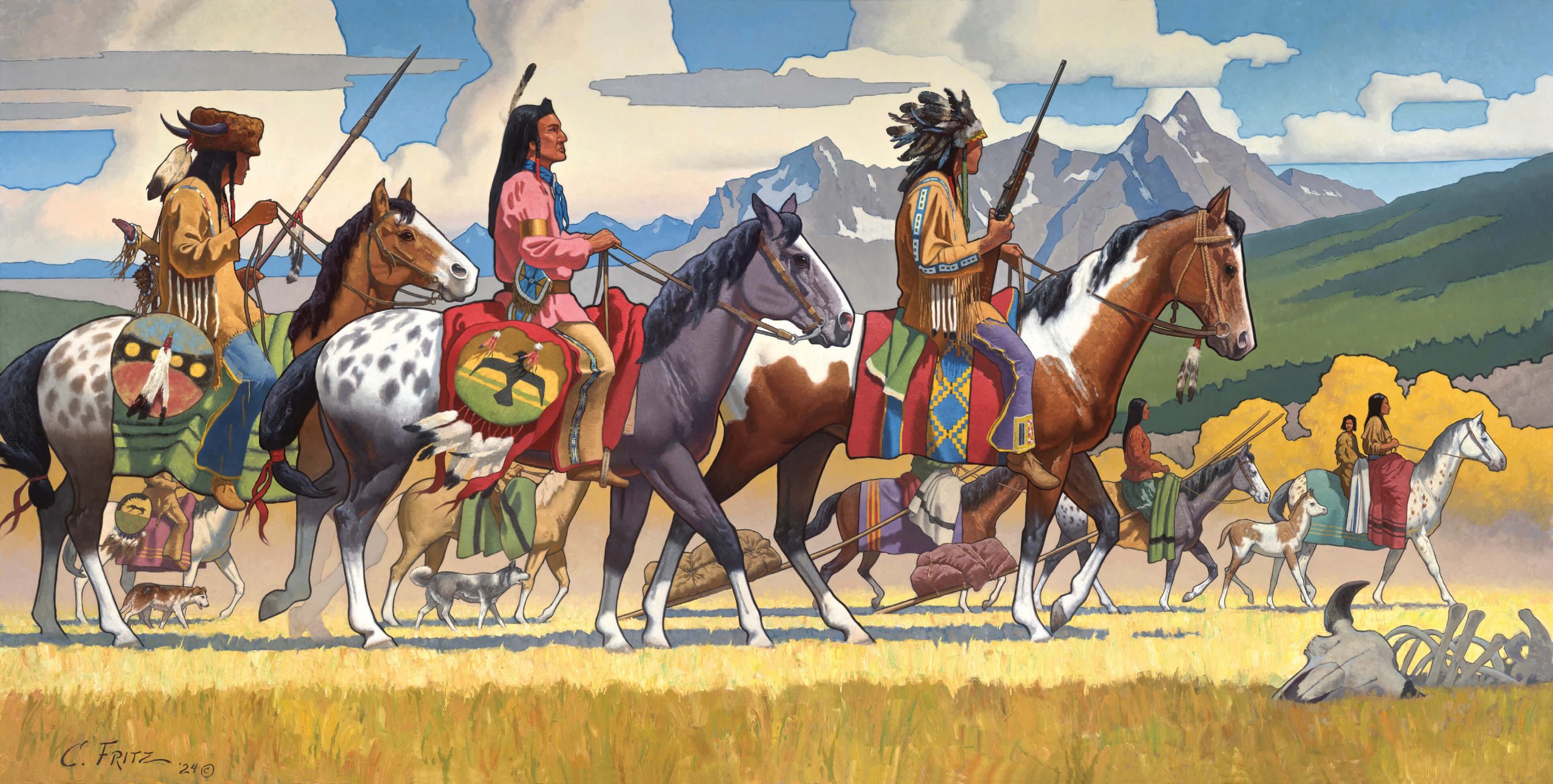
25 Sep Artist of the West: A Quintessential Painter
When Charles Fritz moved to Montana in the 1980s, he ran into a problem. Up until then, the Iowa-born artist had carved out a niche for himself in the watercolor market, painting sporting still lifes: wooden decoys, hanging mallards, shotguns. “But when I came out to Montana, I got interested in landscape painting pretty quickly,” says Fritz. “And I found that watercolors could not communicate the landscape the way I wanted to.”
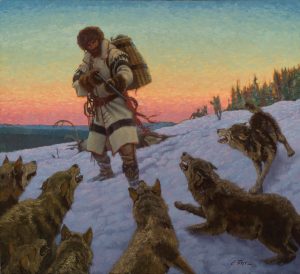
Coming to the Shot | OIL ON CANVAS | 25 X 30 INCHES
Part of the problem was practical: Plein air watercolor painting in Montana is a battle against the ultra-dry climate of the Northern Rockies, Fritz explains, where “the paint just dries so quickly” that it’s hard to control on the page. The other problem was emotional. “I think, then, and still now, I’m searching to capture colors as realistically as I can.” And the colors of Montana, he discovered, are simply too vivid for watercolor.
So he turned back to oils, a medium he hadn’t touched since childhood. “I found that oil works really well for representing the nuances of the Montana landscape, capturing the true colors but also suggesting texture, light, and depth. Oil can convey how this landscape makes you feel.” It’s a testament to the power of this region — though Fritz still keeps a soft spot for watercolors. “I’d like to take them back up again, see where they get me.”
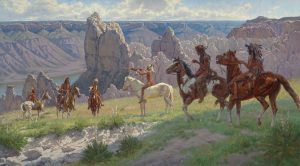
Honoring the Great River | OIL ON CANVAS | 36 X 65 INCHES
Switching to oils proved to be the right move. In the years that followed, Fritz made a name for himself in the Western art scene. His bright, lively oil paintings capture moments that feel surreal, but are commonplace in Montana: the saturated oranges and blues of a mountain sunrise, the brilliant white of fresh December snow, the yellow glow of clouds at sunset.
“Charles Fritz is your quintessential painter,” says Curtis Tierney, owner of Tierney Fine Art in Bozeman, Montana, which features Fritz’s work in its collection. “His artistic process represents the purest and most focused form of what it means to be an artist, starting with his unique observations of the natural world from the field. Fritz next creates a vision that is refined through studies, either drawings or small oil sketches. His technical skills and craftsmanship, gained through years of experience, are then used to create the finished painting. It’s Charlie’s dedication to make every painting his personal best that so impresses me, that toil and effort on each work.”
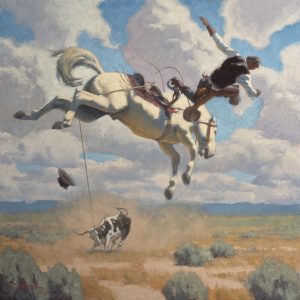
Over React’n | OIL ON CANVAS | 18 X 18 INCHES
Fritz grew up on the rolling plains of Iowa, in the heart of the Midwest. His father was an art teacher, “so there were always creative things going on around the house, all the time,” says Fritz. He sold his first painting in seventh grade, a copy of an Outdoor Life magazine cover. “My parents said I learned to read with Outdoor Life,” he recalls with a smile. The artwork he copied was by Bob Kuhn, an illustrator who would later rise to prominence as one of the country’s foremost wildlife painters.
Years later, Fritz’s path crossed with Kuhn’s again. “I ended up visiting him at his home in Tucson,” Fritz recalls. “I brought along my scrapbook from childhood, full of clippings I’d studied as a boy. A lot of them were his paintings, so that was kind of full circle.”
Although Fritz went on to study education and history at Iowa State University, art was never far away. He filled sketchbooks with pen-and-ink drawings and watercolors throughout his college years. After graduating, he and a friend set off on bicycles across Europe, traveling for months through a string of countries and absorbing centuries of mosaics, paintings, and museum collections. The trip left him exhilarated. “But when I came back to the States, I was broke. I needed a job.” He took a teaching position in Boone, Iowa. “I’d teach during the day but continue to make art at night.”
That routine lasted about a year and a half. “That’s all it took for me to leave teaching and pursue a career in painting full-time,” he says. At first, Fritz leaned into his roots. “It was the Midwest, so the art market was all Ducks Unlimited — very waterfowl focused.”
His move to Montana marked a turning point. “I’d just always wanted to get out here,” Fritz explains. When he arrived in Billings, he quickly immersed himself in the local art scene. Established artist Hal Diteman became an early mentor. Fritz spent a year going to Diteman’s studio daily to learn and hone his craft. “That experience served as a real springboard for the rest of my career,” says Fritz, who also joined a critique group of fellow young artists in the city. “We were all striving to improve and get better, and we all encouraged each other.”
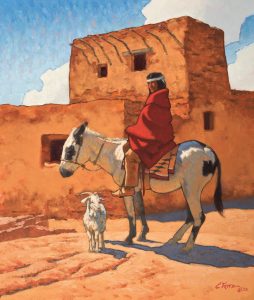
Inseparable | OIL ON CANVAS | 19 X 16 INCHES
This was the period when Fritz switched to oils. The transition wasn’t seamless, but he stuck with it. “I’ll tell you something, my friend Hal Diteman once told me: ‘If oil painting were easy, there’d be more good ones,’” Fritz shares with a laugh.
In the years that followed, Fritz became known as an oil painter of the American West. This identity made him the perfect candidate for the once-in-a-lifetime project he undertook in the late 1990s, his Lewis and Clark collection. The idea began with a single commission. An art collector asked Fritz to paint a scene described in Meriwether Lewis’ journal, the moment the Corps of Discovery reached the confluence of the Yellowstone and Missouri rivers. The project stirred something in Fritz. “There had been no artist on the expedition when it actually happened,” he explains. “And as a history buff, I’d always been interested in it.” With the bicentennial of the journey approaching, Fritz saw an opportunity; he would retrace the Corps’ route himself, using Lewis’ journals as his guide, and paint the expedition as though he had been its artist. “I thought, man, I could have been the artist on that expedition, so why not be that artist now?”
Over several years, Fritz created 100 paintings for the project, each one rooted in Lewis’ meticulous notes. “The experience taught me a lot about the value of that expedition, and the success of it,” Fritz says. “They traveled over 8,000 miles out and back, and only lost one person. That’s incredibly impressive. They found a way to survive in the harshest conditions.”
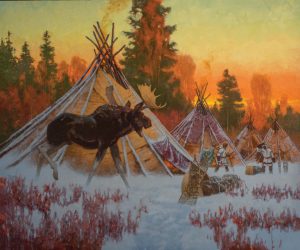
When Mischief Meets Métis | OIL ON CANVAS | 30 X 36 INCHES
These days, Fritz opts to stay closer to home, working primarily from Montana and the Southwest. But he continues to pursue projects that challenge him creatively. One such project was a recent, private commission of an expansive Western scene, completed for a home in western Montana. Spanning an impressive 7 by 14 feet, the artwork depicts Chief Joseph and the Nez Perce during their 1877 flight and trek up the Bitterroot Valley. The work is a masterpiece of engineering, involving custom stretcher bars from New York, canvas from an 8-foot loom in Italy, an angled frame to ensure viewers can see the painting clearly despite its spot high on a wall, and about a dozen installers to help with the job.
But first and foremost, the painting is a masterpiece of color, light, and form. The work has traces of minimalism — in the shape of the clouds or the contrast of light as it hits the landscape — that reflect Fritz’s more recent explorations in style. “I’m in a moment in my career where I’m experimenting with simplified forms, seeing how they can capture different landscapes,” Fritz explains. “For me, I’m always trying to perfect how I capture a feeling, an emotion, at a specific moment in time.”
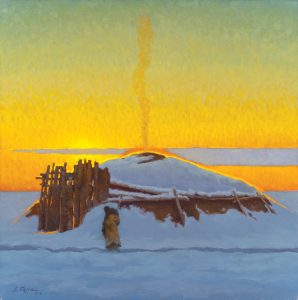
Hidatsa Lodge at the Knife River Village | OIL ON CANVAS | 22 X 22 INCHES
With over three decades of experience as an artist under his belt, Fritz continues to hone his craft and remains engaged in the artistic community. This year marked the 30th year of Fritz’s participation in the Prix de West Invitational Art Exhibition & Sale, which takes place annually at the National Cowboy & Western Heritage Museum in Oklahoma City, Oklahoma. This fall, he’ll travel to Bartlesville, Oklahoma to take part in the Woolaroc Museum’s special 100th anniversary edition of its biennial exhibition and sale as one of 40 artists chosen to participate in the event. While these activities take Fritz across the country, he eagerly returns home to Billings, where he continues to celebrate Montana moments through art.
Halina Loft is a writer and editor based in Bozeman, Montana. Before moving west, she worked as an arts editor for Sotheby’s in New York City.



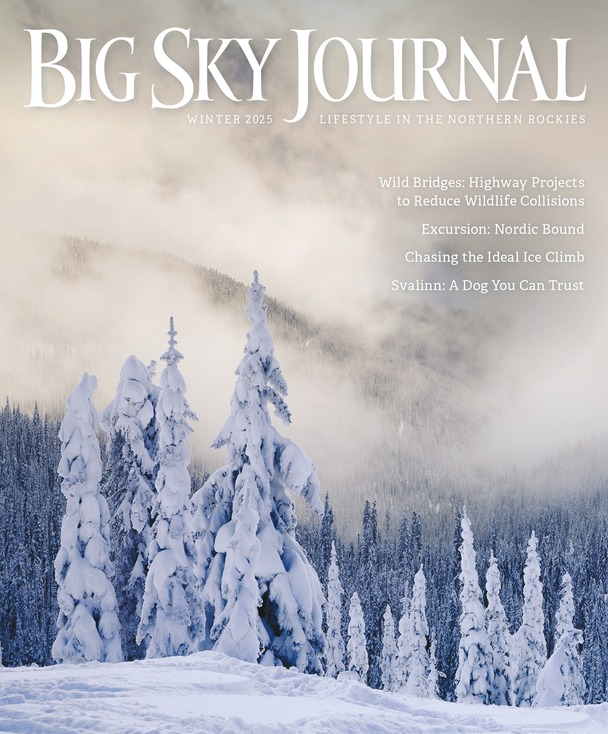
No Comments